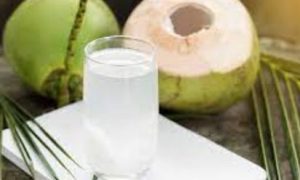The Assam Health department has issued a new Standard Operating Procedure (SOP) for Black Fungus or Mucormycosis after it has been suspected to have detected in a 27-year old boy who succumbed to the disease at Apollo Hospital in Guwahati.
An order, issued on Thursday by the principal secretary to the health department of Assam government said the SOP has been issued after a “suspected case of mucormycosis (black fungus) has been detected in a hospital at Guwahati”.
The order said “a large number of similar cases have been reported from other parts of the country” and “there is likelihood of increase in number of such cases in the near future”.
“Therefore in order to screen, diagnose and manage such cases of mucormycosis (black fungus) in COVID patients, the Standard Operating Procedure” is notified with immediate effect “in order to contain the further spread of the disease and in order to provide treatment as per protocol to the patients affected by such disease,” the guidelines said.
This order shall come into force with immediate effect, the principal secretary to health said.
Following is the Standard Operating Procedure for screening, diagnosis and management of mucormycosis in Covid patients:
What is mucormycosis (black fungus)?
“Mucormycosis is a rare serious fungal infection caused by fungus Mucor. People get mucormycosis by coming in contact with its spores in the environment. It can also develop in the skin after the fungus enters the skin through a cut, abrasion, burn or other types of skin trauma,” the SOP said.
Pre-disposing factors:
It can develop in patients:
With uncontrolled diabetes mellitus specially diabetic keto acidosis. • lmmuno suppressed patients (post transplant malignancy, injudicious use of high dose of steroids, Etolizumab/Tocilizumab
Prolonged ICU stay
People with HIV
Malnutrition
Trauma including bum
When to suspect?
If people having predisposing factors mentioned above develop: Nasal blockage, pain over cheek bone eyes, blood stained or blackish nasal discharge, congestion or redness and swelling of eyes and nose, difficulty in vision e.g. blurred vision, painful eye movement, double vision and blindness.
- Headache and fever, seizures, altered mental state.
- Cough and blood stained sputurn, shortness of breath with worsening respiratory problem.
- Tooth ache, loosening of teeth & jaw involvement.
- Redness, blackish discoloration in the skin with necrosis.
How to diagnose?
High index of clinical suspicion with special reference to pre-disposing factors
Scrapping of the affected skin and examination with KOH preparation
Nasal swab for fungal budding hypae
Fungal culture & skin biopsy
Blood investigation – CBC, LFT, KFT, Electrolytes, Blood sugar (fasting, PP, HBA1C)
Imaging – CT scan/MRI of brain, PNS and chest
Investigation related to pre-existing diseases
How to prevent?
COVID patients in hospital:
Better control of blood sugar during COVID with or without steroids
Use steroids judiciously observing correct timing, correct doe & correct duration.
Use antibiotics/anti-fungus judiciously
Use clean, sterile water for humidifiers during the oxygen therapy
COVID patients in Home isolation:
Patients who have comorbid conditions like Diabetes Mellitus, on immune suppressant drugs, renal transplant patients or those or steroids for medical cause need to observe the following warning symptoms:
- Facial Pain/ Cheek pain
- Bloody & foul smelling nasal discharge
- Nasal stuffiness
- Eye Symptoms like — Eyelid edema, redness in the eye, any visual disturbance.
Community in general:
- Use masks if you are visiting dusty construction site
- Wear shoes, long trousers, long sleeve shirts & gloves while handling soil (Gardening), moss or manure.
- Maintain personal hygiene including thorough scrub bath.
- Seek immediate medical attention in case of developing any or combination of symptoms.
Often mucormycosis is reported due to poor maintenance of humidifiers. Hence the following SOP is prescribed for strict adherence:
- Always use distilled or sterile water
- Never use unboiled tap water nor mineral water.
- Fill up to about 10 mm below the maximum fill line
- Do not let the water level pass below the minimum fill line
- The water level checked twice daily and topped up as necessary
- The water in the humidifier should be changed daily
- Humidifier should be washed in mild soapy water, rinsed with clean water and dried in air before reuse.
- Once a week (for the same patient) and in between patients, all the components of the humidifier should be soaked In mild antiseptic solution for 30 minutes, rinsed with clean water and dried in air
Treatment:
Medical management Antifungal Therapy:
1) Hydrate the patient with 500 ml of NS before Amphotericin-B
2) Inj. Liposomal Amphotericin-B — 5-10 mg/kg/day to be diluted in 500 ml of 5% Dextrose over 4-5 hours for 14-21 days in hospital.
Or
3) Inj. Amphotericin-B — 1-1.5mg/kg/day mixed with 500 ml 5% Dextrose over 4-5 hours for 14-21 days in hospital. Special precaution to be taken during Amphotericin-B infusion as this drug is photosensitive.
4) Monitor S. Creatinine and S. Potassium every 72 hours
5) Patients who are intolerant to Amphotericin-B can be given alternative agents like Posoconazole Tab. 300mg twice daily on day one followed by 300 mg once a day for 3-6 months.
6) Monitor patient clinically microbiologically and with radio imaging for assessing & disease progression.
7) After 3-6 weeks of Amphotericin-B therapy, consolidation therapy with Posaconazole for 3-6 months to be instituted. Duration of therapy depends on clinical response and radiological resolution and has to be individualized.
Surgical management:
- Surgical debridement to remove all necrotic material, by ENT and Ophthalmology team –
Dr Pankaj Adhikari, Professor, HoD, Dermatology & Member Secretary; Dr Basanta Hazarika, Professor of Pulmonary, Medicine & member; Dr kalpana Sharma, Prof. & HoD, ENT & member;
Dr. DN Choudhury, Prof. & HOD, Gastroenterology & Member;
Dr Marami Das, Prof & HOD, Neurology & Member.



































